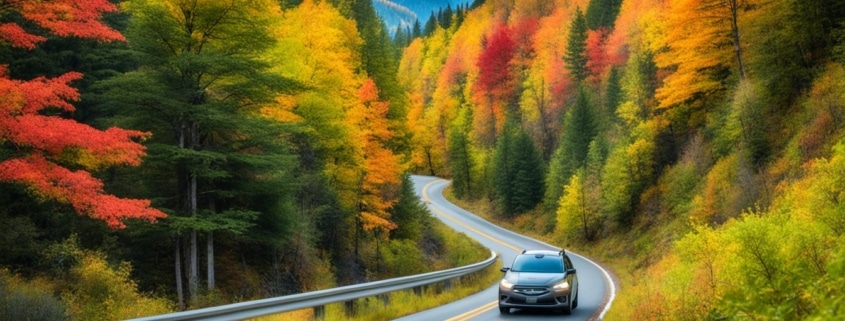Road Tripping to America’s National Parks: A Complete Guide
Embarking on a road trip to America’s National Parks is a journey through diverse landscapes and a dive into the beauty of natural wonders. Inspired by data scientist Randal Olson’s efficient route, our travel guide encourages travelers to explore the 47 national parks within the contiguous United States in an epic cross-country loop. This comprehensive guide is based on practical experiences and extensive research, ensuring that travelers are equipped with essential information, from selecting parks like Grand Canyon and Yellowstone to recommendations for every season.
With tips on how to move at a pace that allows for meaningful experiences, this guide is a one-stop resource for planning an unforgettable adventure. Whether you are a senior, vanlifer, or simply looking to make the most of your vacation days, this guide will enhance your park itineraries. Visitors should also consider purchasing an annual pass to save on entrance fees, allowing for a cost-effective way to experience the parks’ grandeur.
Join us on this scenic drives journey through some of the most breathtaking American landscapes as we explore the ultimate travel guide to road tripping America’s National Parks.
Planning Your National Parks Road Trip
Planning a successful national parks road trip requires thoughtful consideration of destinations and timing. With 63 national parks to choose from, decisions should be informed by seasonal factors and personal interests. Here, we dive into key components of itinerary planning to make your adventure a memorable one.
Choosing Your Destinations
The initial step in itinerary planning is park selection. Consider what fascinates you most – majestic landscapes, wildlife encounters, or historical sites. For instance, Acadia offers stunning coastal vistas, Zion is celebrated for its red-rock formations, and Bryce Canyon is famous for its hoodoos. It’s beneficial to combine destinations to maximize your experience. Always take into account the unique features and activities each park provides when crafting your travel plans.
When to Visit
Selecting optimal travel times is pivotal to enjoying the parks in their full glory. Seasonal highlights can make or break your experience. Spring is favorable for parks in the Southwest like Zion due to milder temperatures and fewer crowds. In contrast, summer is ideal for exploring mountainous parks such as Mount Rainier when trails and passes are accessible. Understanding regional climates and park elevations will help you pinpoint the best time for your visit.
Budget Planning
Effective budget planning involves understanding costs and making the most of available cost-saving tips. National park entrance fees can quickly add up, but the America the Beautiful Pass offers a cost-effective solution for frequent visitors. Besides entrance fees, consider travel expenses, accommodation, and meal costs. Opting for RV-friendly parks can reduce lodging costs. Additionally, booking tickets via Recreation.gov can secure access to popular parks during peak seasons, ensuring a streamlined and enjoyable trip.
| Park | Best Season | Entrance Fee | Unique Activities |
|---|---|---|---|
| Acadia | Summer | $30 per vehicle | Coastal Views, Hiking |
| Zion | Spring | $35 per vehicle | Rock Climbing, Canyoneering |
| Bryce Canyon | Spring/Fall | $35 per vehicle | Star Gazing, Hoodoos Photography |
| Mount Rainier | Summer | $30 per vehicle | Glacier Viewing, Wildflower Meadows |
Essential Preparations for Road Tripping
Embarking on a road trip through America’s national parks demands thorough planning and preparation. Ensuring our vehicle is ready for the journey, packing the right essentials, and securing our camping and lodging reservations can make or break the experience.
Vehicle Prep and Safety
Before hitting the road, it’s crucial that we focus on vehicle maintenance to guarantee travel safety. This includes checking the oil and coolant levels, inspecting the brakes, and ensuring the tires are in good condition. We should also arm our ride with a spare tire, jacks, jumper cables, and a repair kit to handle unexpected breakdowns.
Packing Essentials
Compiling a detailed gear checklist will keep us equipped for our adventure. Navigation tools such as maps or GPS devices, adequate sun protection, first-aid supplies, and sufficient water are non-negotiable. Additionally, packing layers of clothing suited for different weather conditions, sturdy hiking boots, and reliable camping gear ensures that we’re prepared for whatever nature throws our way.
Camping and Lodging
Securing camping reservations in advance is vital to avoid last-minute scrambles, especially since many national parks have limited amenities. Look into options like campgrounds at nearby state parks or Bureau of Land Management (BLM) lands for flexibility. For those preferring more comfort, popular accommodation options like historic lodges and cabins inside the parks often require booking months ahead. Keep in mind the importance of adherence to Leave No Trace principles to protect the parks’ natural beauty for future generations.




Leave a Reply
Want to join the discussion?Feel free to contribute!